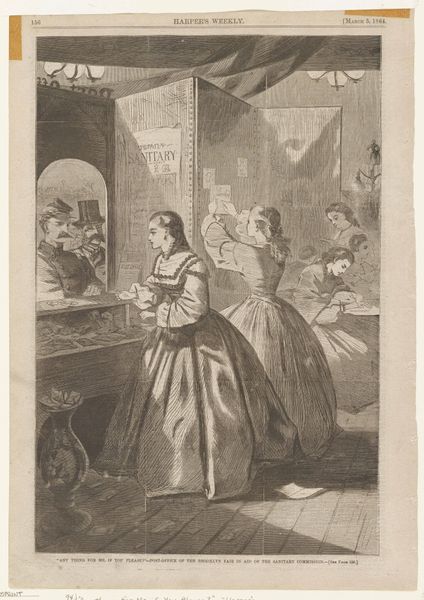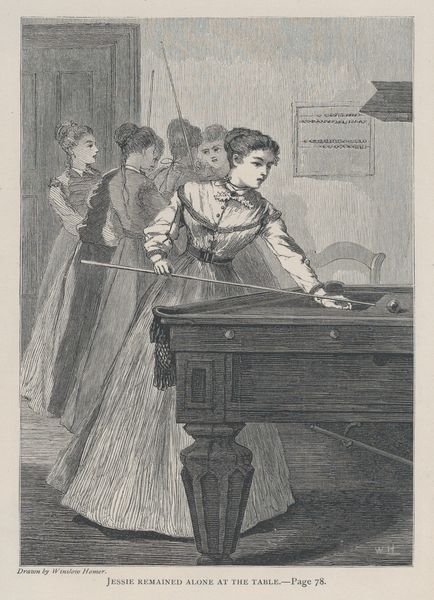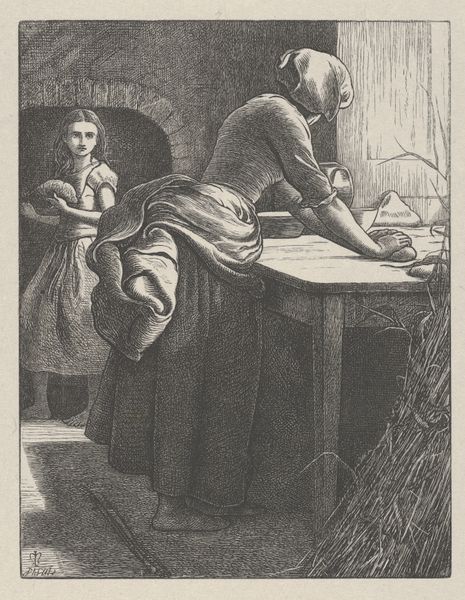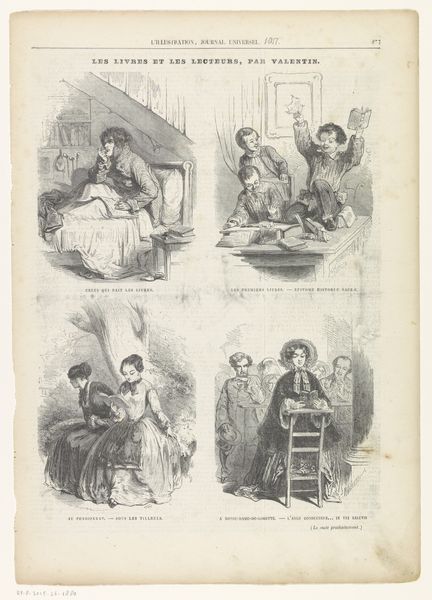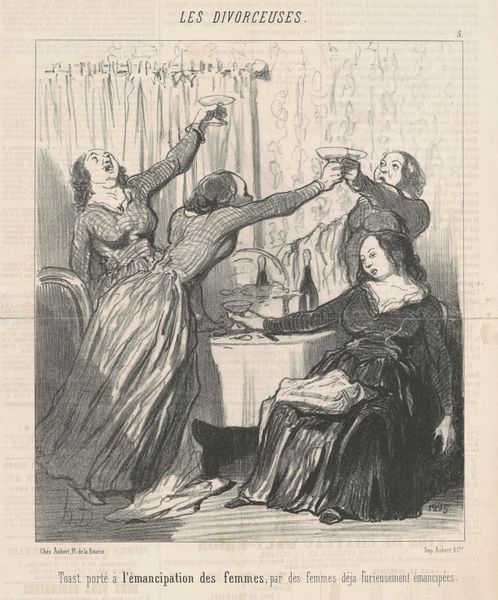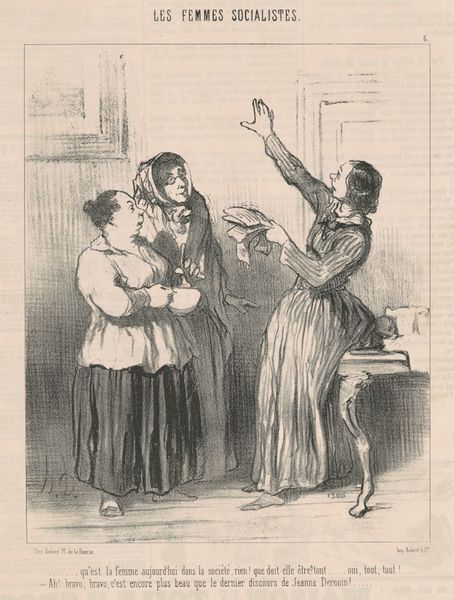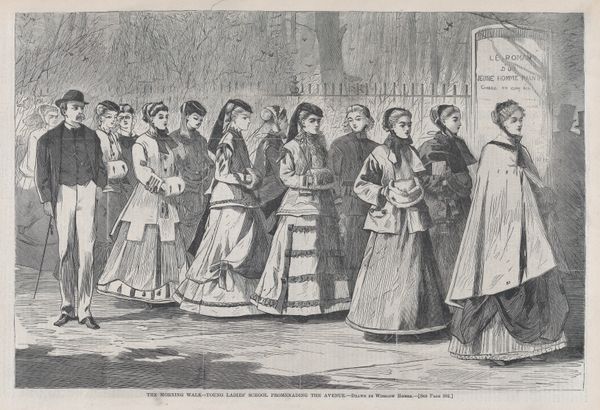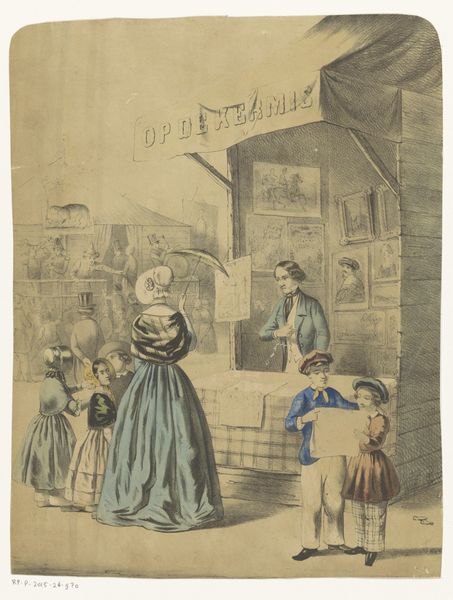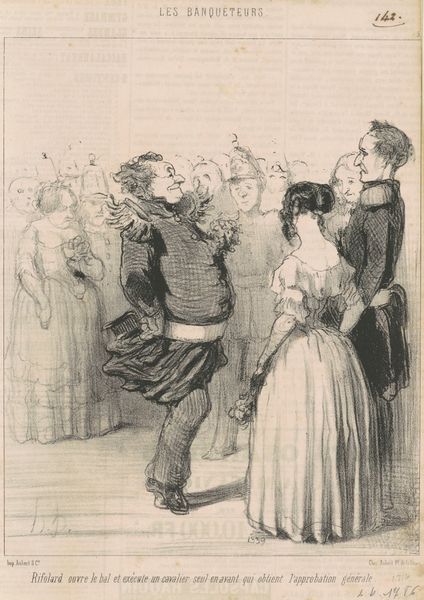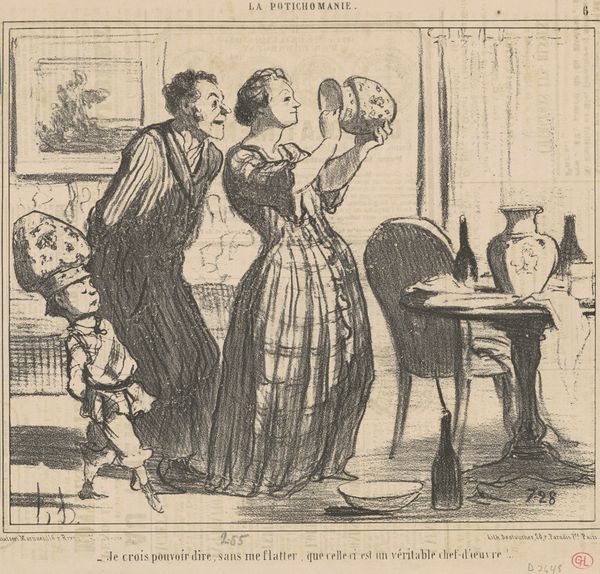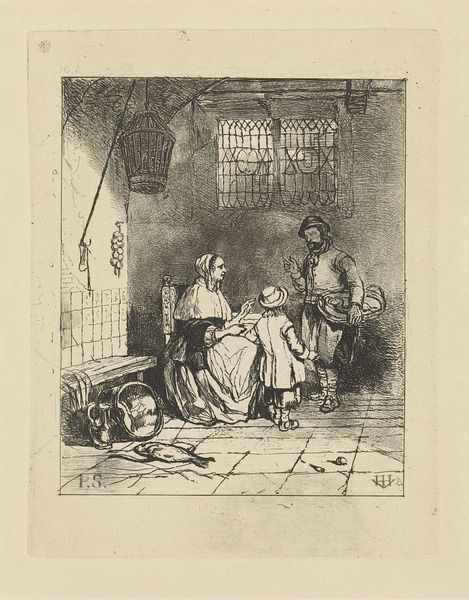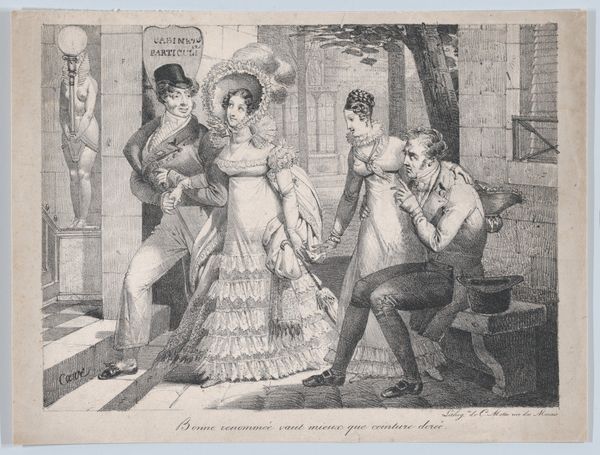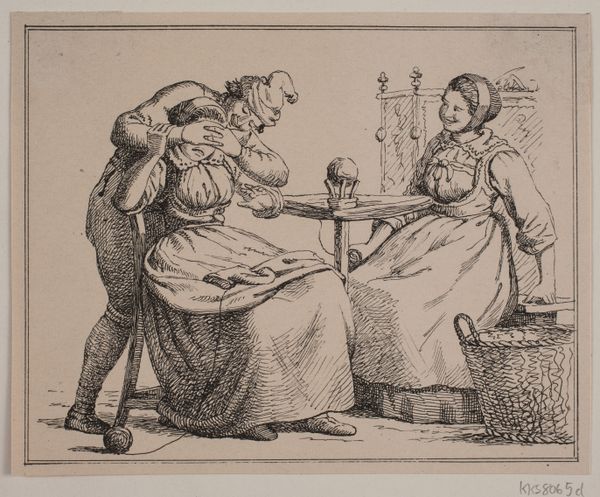
"Any Thing for Me, if you Please?" Post-Office of the Brooklyn Fair in Aid of the Sanitary Commission (from "Harper's Weekly," Vol. VIII) 1864
0:00
0:00
drawing, graphic-art, print
#
drawing
#
graphic-art
# print
#
history-painting
Dimensions: image: 13 5/8 x 9 1/8 in. (34.6 x 23.2 cm) sheet: 15 3/4 x 10 9/16 in. (40 x 26.8 cm)
Copyright: Public Domain
Curator: This print by Winslow Homer, dating from 1864, is titled "Any Thing for Me, if you Please? Post-Office of the Brooklyn Fair in Aid of the Sanitary Commission". It appeared in Harper's Weekly during the Civil War. What strikes you most about it? Editor: The crispness of the linework and hatching. The artist created incredible gradations, especially evident in the rendering of the women's dresses and the interior shadows. It also speaks volumes about period fashion! Curator: Absolutely. Homer documented this Brooklyn Fair, a fundraising event organized by the Sanitary Commission to support Union soldiers. Notice how the image highlights the roles women played in these efforts, staffing the post office booth, which itself becomes a site of civic engagement and perhaps even romantic possibility. Editor: It's fascinating to think about the production of this print within a broader system of information dissemination. Harper's Weekly was a widely circulated periodical. Images like this shaped public opinion and solidified the Union cause. How accessible would you say an original print like this would have been versus reproductions today? Curator: Incredibly accessible. Printed illustrations allowed widespread circulation, forming a visual culture available to those who could afford the paper. The labor required to create the wood engraving is also important. It involves both artistic skill and industrial production. We must consider not only Homer's initial design, but also the artisans involved in its mechanical reproduction. Editor: Do you think the detailed representation of the women and their garments elevate the ordinary tasks they are performing here? Their clothing speaks to class and participation. The visual prominence suggests active agents shaping both domestic and civic life during wartime. Curator: I think it acknowledges their contribution in very specific ways. Images of home and support networks bolstered national morale, but also concretely aided efforts on the front lines. It really sheds light on the interconnected relationship between the domestic sphere and the wider political landscape during wartime. Editor: I agree. It really gives insight into the war-era construction and circulation of both printed media and cultural narratives. The print functions not just as art but also a visual tool that promoted shared understandings of patriotism and civic duty.
Comments
No comments
Be the first to comment and join the conversation on the ultimate creative platform.
